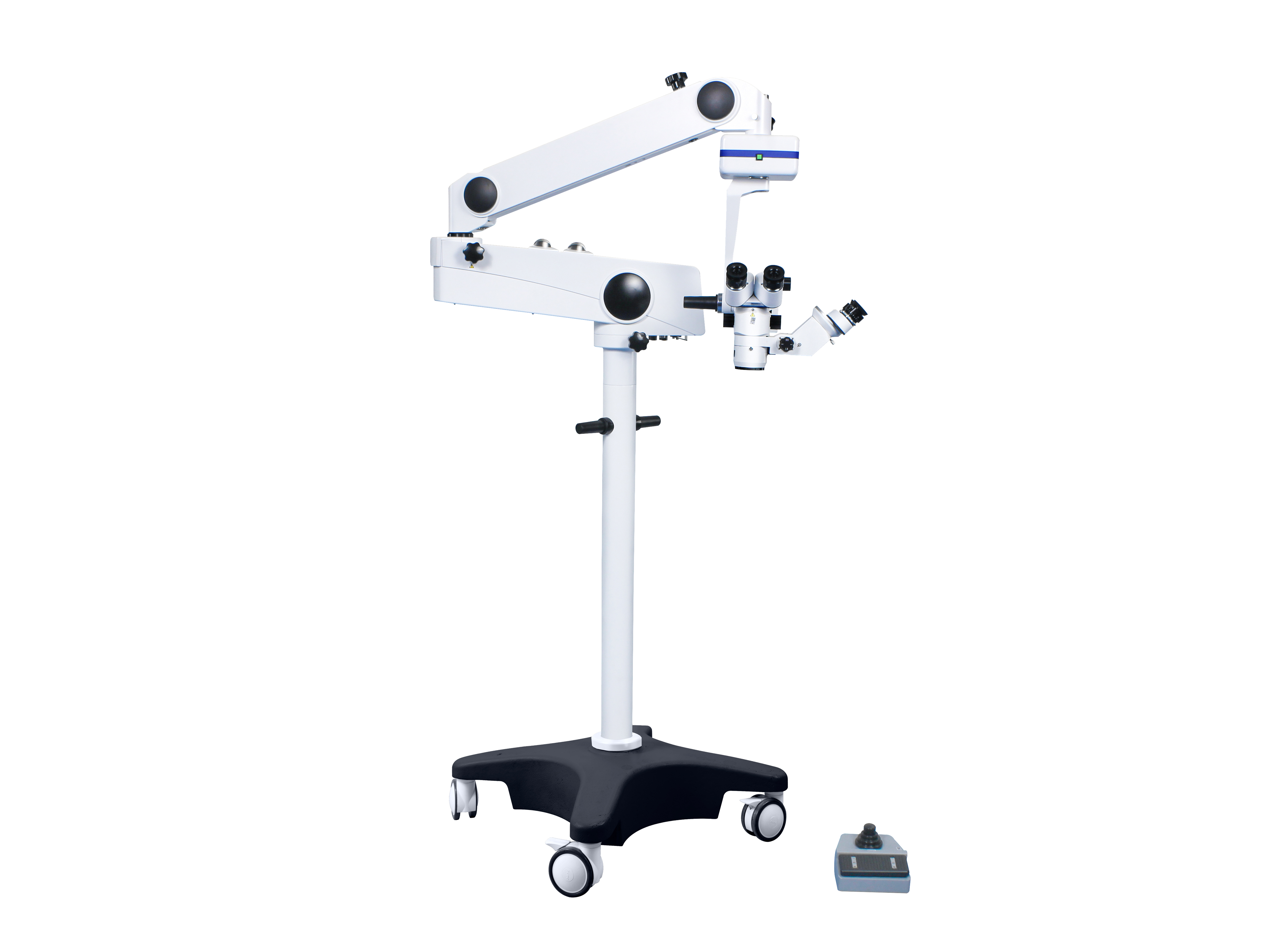Introduction to ophthalmic surgical microscopes
Ophthalmic surgical microscope is an advanced medical device specifically designed for ophthalmic surgery. It combines a microscope and surgical tools, providing ophthalmologists with a clear field of view and precise operations. This type of surgical microscope plays a crucial role in ophthalmic surgery, enabling doctors to perform delicate and complex eye surgeries.
Ophthalmic microscopes typically consist of a microscope lens, an illumination system, and an operating table. Microscopic lenses have a high magnification function, which can enlarge eye tissues and structures, allowing doctors to observe eye details clearly. The lighting system provides sufficient light to ensure a bright surgical area and enables doctors to accurately identify and address eye issues. The operating console provides a stable working platform, allowing doctors to perform precise surgical operations.
Ophthalmic operating microscopes are widely used in various ophthalmic surgeries. This includes cataract surgery, retinal surgery, corneal transplantation surgery, etc. In cataract surgery, ophthalmologists use a Operating microscope to magnify the patient's eye, remove the blurry lens through a small incision, and implant an artificial lens to restore the patient's vision. In retinal surgery, ophthalmologists use ophthalmic microscopes to observe and repair damaged retina to prevent further deterioration of vision. In corneal transplantation surgery, ophthalmologists use Ophthalmic medical microscopes for precise corneal transplantation to treat corneal diseases and injuries.
The use of ophthalmic surgical microscopes has brought many benefits. Firstly, it provides a clearer view, enabling doctors to diagnose and treat eye problems more accurately. Secondly, it makes surgical procedures more precise, reducing surgical risks and the occurrence of complications. In addition, ophthalmic medical microscopes can also facilitate postoperative evaluation and teaching for doctors through image recording and video transmission functions.
However, ophthalmic surgical microscopes also have some limitations. Firstly, it requires specialized training and experience to operate correctly. In addition, the cost of ophthalmic microscopes is relatively high, which is an expensive investment for both medical institutions and patients. In addition, ophthalmic surgical operation microscopes have a large volume and require a large operating room space.
Ophthalmic surgery microscope is an indispensable tool in ophthalmic surgery. It provides clear vision and precise operation, enabling ophthalmologists to perform complex eye surgeries. Although there are still some limitations, with the continuous advancement of technology, ophthalmic operating microscopes will continue to play an important role in providing patients with better eye treatment outcomes.

Post time: Dec-23-2024







